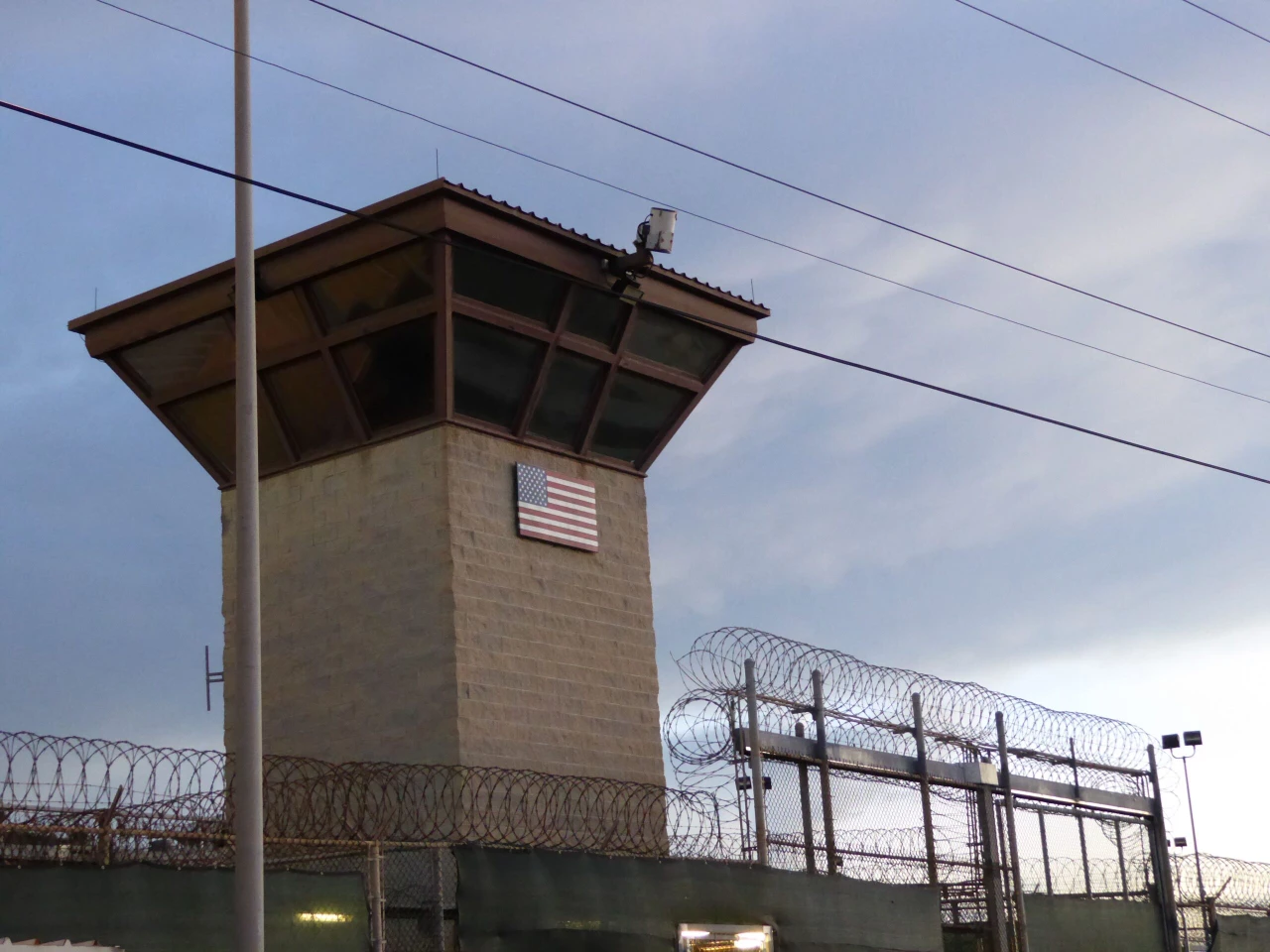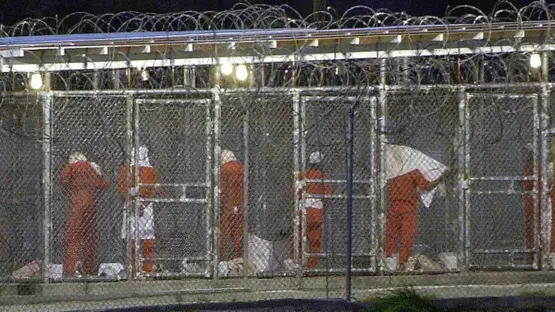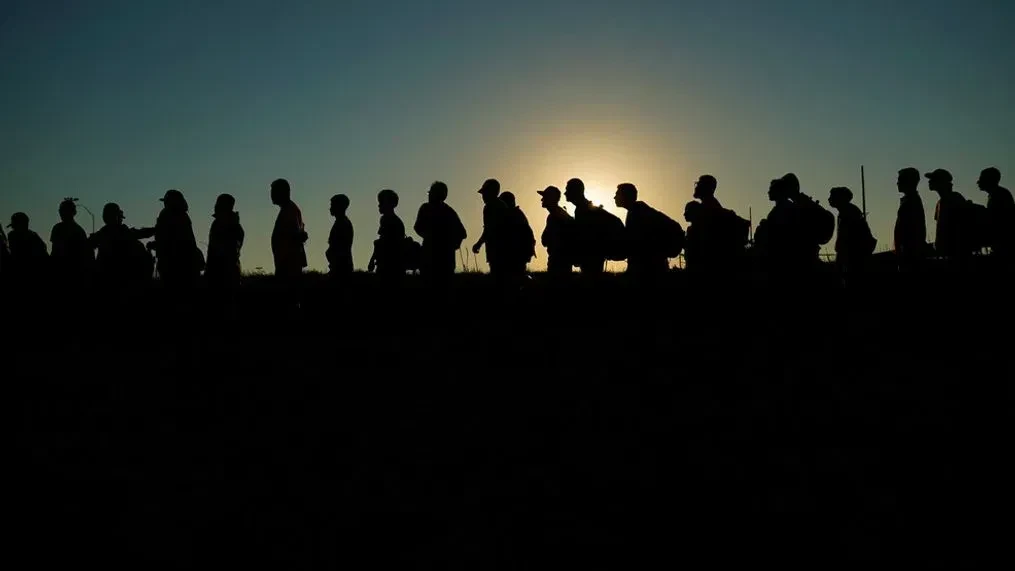Returning to indefinite detentions at Guantanamo?
 The main gate at the U.S. Guantanamo Naval Base prison. Oct. 16, 2018. Guantanamo Base, Cuba. (Photo Sylvie Lanteaumel/AFP).
The main gate at the U.S. Guantanamo Naval Base prison. Oct. 16, 2018. Guantanamo Base, Cuba. (Photo Sylvie Lanteaumel/AFP).
For over 20 years, Guantanamo Bay has been a symbol of secrecy, indefinite imprisonment, and legal uncertainty. Originally established after the Sept. 11 terrorist attacks, it was meant to house its suspects. But over time, it became a place where hundreds of men, mostly Muslims, were held without trial; even some for more than a decade. Human rights organizations and legal experts have long condemned its conditions, calling it a violation of fundamental legal protections.
Now, in Donald Trump’s second presidency, history is repeating itself. His administration has decided to expand Guantanamo’s role, planning to detain up to 30,000 undocumented migrants at the facility. The move has revived concerns about human rights abuses, legal accountability, and the use of Guantanamo as a legal gray zone; a place where normal rules or the law do not apply.
Legal limbo with no clear exit
For years, Guantanamo Bay has been a loophole in the American legal system. Because it is located in Cuba rather than on U.S. soil, the government has argued that detainees there are not entitled to full constitutional rights. This claim has allowed multiple administrations to hold people indefinitely without charges or trials.
During the Bush administration, many of the men sent to Guantanamo, primarily Muslims from Afghanistan, Pakistan, and elsewhere, were labeled “enemy combatants” instead of prisoners of war. This classification allowed the U.S. government to argue that they were not protected under the Geneva Conventions, which set international rules for the treatment of prisoners. As a result, many spent years locked up without being formally charged with a crime.
While national security and counterterrorism are important, legal protections cannot be ignored. A government that compromises legal rights in the name of security risks losing the very democratic values it claims to protect. Time and again, Guantanamo has been criticized for violating these fundamental principles.

Now, the Trump administration’s actions have escalated concerns further. On Feb. 4, the U.S. government “quietly” sent 178 Venezuelan migrants to Guantanamo, holding them incommunicado. Many were placed in Camp 6, a facility once reserved for suspected al-Qaeda members. A week later, a coalition of legal organizations, including the American Civil Liberties Union (ACLU), filed a lawsuit on behalf of three detainees. In an alarming revelation, the case exposed that these migrants had even “fewer rights than the terrorism suspects” once held at Guantanamo.
Before the courts could intervene, the Trump administration acted abruptly. Nearly all the Venezuelan detainees were suddenly deported to Honduras, where they were placed on flights back to Venezuela. Some had no criminal record at all, aside from illegally crossing the border. One asylum-seeker had already passed his first screening but lost his case while representing himself. His sister only discovered that he had been held at Guantanamo when the administration released photos of detainees being flown out. That place was once understood as a compound or group of compounds where only terrorism suspects were held. Clearly, that is no longer the case. It is undeniable that this represents an unpredictable legal stretch and, even more, a broad negative implication for the people.
Familiar playbook of dehumanization
The use of Guantanamo for migrant detention is not just a legal decision. Obviously, it is a political strategy. The Trump administration has framed migrants as dangerous criminals, fueling public fear to justify harsh immigration policies. This tactic is not new. Throughout American history, political leaders have used fear-driven narratives to justify extreme policies targeting specific groups.
Trump has repeatedly described immigration as an “invasion,” using military language to frame migrants as a national security threat. His Secretary of Homeland Security Kristi Noem called the Venezuelans sent to Guantanamo “dirtbags”, falsely claiming that they were mainly child traffickers and drug dealers. Unfortunately, without any evidence, Trump himself insisted that “some of them are so bad, we don’t even trust the countries to hold them”.
This kind of rhetoric mirrors the post-9/11 language used to justify indefinite detentions at Guantanamo. However, Trump has shifted his focus. During his first presidency, he primarily linked Central American migrants to gang violence, particularly MS-13. Now that Venezuelans represent a larger portion of border crossings, he is applying the same strategy; invoking the Venezuelan gang Tren de Aragua to suggest that all Venezuelan migrants are criminals.
By erasing distinctions between criminals and ordinary migrants, the administration justifies mass detentions and mass deportations, regardless of individual cases or legal rights.
Mass deportations and military involvement
While the Guantanamo migrant detentions may have seemed chaotic, they were part of a larger plan. Trump has been expanding the role of the military in immigration enforcement, a shift with major financial, legal and human rights consequences.
Normally, Immigration and Customs Enforcement (ICE) handles deportations, using chartered planes that can carry about 150 passengers. But under President Trump, the administration has started using military aircraft, which are smaller, “far more expensive, and less regulated”. A recent analysis found that deportation flights on military planes cost over five times the price of a first-class commercial ticket.
At the end of January 2025, Trump signed an order allowing 30,000 migrants to be detained at Guantanamo. Court documents reveal that ICE officials see Guantanamo as a “temporary holding center” for fast deportations. Meanwhile, the administration is also preparing to hold thousands of undocumented migrants at military bases inside the U.S.

Guantanamo’s future
For over two decades, Guantanamo has been a place where legal norms are abandoned and human rights abuses occur without accountability. Despite global criticism and calls for closure, the prison remains open, its purpose shifting to fit each administration’s agenda.
Instead of tackling the root causes of migration or improving the U.S. immigration system, the Trump administration has opted for a detain-and-deport approach; one that bypasses due process and legal protections.
In fact, the expansion of Guantanamo is not just about immigration enforcement. This is a dangerous precedent. Whether this latest policy leads to another generation of indefinitely detained migrants remains to be seen. But if history is any guide, those sent to Guantanamo today may find themselves trapped in a system designed to keep them invisible and beyond the reach of the law.
About the author: Tolga Sunhiran is a freelance writer specializing in political and global issues.



